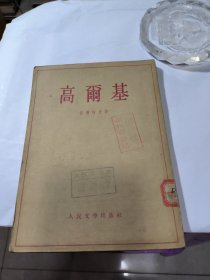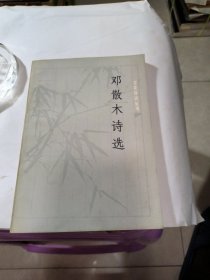
句子语义学
¥ 15 6.0折 ¥ 25 八品
仅1件
江苏南京
认证卖家担保交易快速发货售后保障
作者司联合 著
出版社东南大学出版社
出版时间2010-12
版次1
装帧平装
上书时间2023-10-09
- 在售商品 暂无
- 平均发货时间 11小时
- 好评率 暂无
- 最新上架
商品详情
- 品相描述:八品
- 详情看图。封面有一点修补。
图书标准信息
- 作者 司联合 著
- 出版社 东南大学出版社
- 出版时间 2010-12
- 版次 1
- ISBN 9787564125714
- 定价 25.00元
- 装帧 平装
- 开本 大32开
- 纸张 胶版纸
- 页数 412页
- 字数 363千字
- 【内容简介】
-
司联合博士的《句子语义学》提出了与还原主义方法不同的一种新的方法。司联合根据中国科学院声学研究所黄曾阳提出的概念层次网络(hierarchical network of concepts,HNC)理论,使用函数和演绎推理的方法来研究句子的语义。
司联合根据特征语义块描述作用效应链的环节的多少,来划分简单句(simple sentence)与繁复句(multiple sentence)。他指出:只描述一个环节的句子形成简单句,它们的类型称为基本句类,而描述两个以上的环节的句子就形成繁复句,句子中有两个以上的特征语义块的也可以形成繁复句。在繁复句的研究中,司联合采用了Leech的观点,把繁复句分为并列句、复合句和混合句,而混合句又可以进一步分为并列-复合句和复合-并列句。这样,就可以从语义角度,而不是语法角度,对句子的语义进行研究。 - 【目录】
-
Preface
序言
Chapter One Introduction
1.1 Introduction
1.2 Lexica! Semantics and Word Meaning
1.3 Sentence Semantics
1.3.1 Situation Types
1.3.2 Tense
1.3.3 Aspect
1.3.4 Mood and Modality
1.3.5 Voice
1.3.6 Thematic Roles
1.4 Sentence Meaning
1.4.1 Word Meaning and Sentence Meaning
1.4.2 Sentence Meaning and Utterance Meaning and Propositional Meaning
1.4.3 Sentence Patterns, Sentence Types and Sentence Categories
1.5 Significance of the Book
1.6 Methodology and Corpus
1.7 Organization of the Book
Chapter Two Interpretations of Sentence Meaning
2.1 Introduction
2.2 Katz' Semantic Theory
2.3 Montague Grammar
2.4 Leech's Semantic Structures of Sentences
2.4.1 Predications, Predicats, and Arguments
2.4.2 n-place Predicates
2.4.3 Predication Analysis
2.4.4 Subordinate Predication
2.4.5 Downgraded or 'Featurized' Predication
2.5 Logical Semantics on Sentence Meaning
2.6 Jackendoff's Conceptual Semantics
2.7 Huang's Hierarchical Network of Concepts (HNC)
2.8 The Theoretical Framework of Sentence Meaning
2.8.1 Theoretical Framework
2.8.2 Huang's Hypothesis of Semantic Chunks and Sentences
2.8.3 Si's Hypothesis of Sentence Meaning
2.8.4 Expressions of Semantic Chunks
2.8.5 Semantic Situation Information
Chapter Three Preliminaries
3.1 Introduction
3.2 Semantic Chunks (including E chunk and JKs)
3.2.1 Constituents of Chunks
3.2.2 Types of Semantic Chunks
3.2.3 Semantic Chunks and Phrases
3.2.4 Constiuents of Sentences
3.2.5 Seven Sentence Categories
3.2.6 Concept Knowledge
3.2.7 EChunk
3.2.8 JKs (juzi kuai)
3.2.9 How to Segment and Combine Chunks
3.3 Three Semantic Networks
3.3.1 Semantic Network of Primitive Concepts
3.3.2 Semantic Network of Basic Concepts
3.3.3 Semantic Network of Logical Concepts
3.4 Semantic Primitives
3.5 Semantic Structural Equation (SSE)
3.6 Linguistic and Philosophical Bases
3.7 Concepts
Chapter Four Simple Sentences
4.1 Introduction
4.2 Action Sentences (XJs)
4.2.1 General Action Sentences
4.2.2 Beating Sentences
4.2.3 Reaction Sentences
4.2.4 Remitting Sentences
4.2.5 Binding Sentences
4.3 Process Sentences (PJs)
4.3.1 General Process Sentences
4.3.2 Basic Process Sentences
4.3.3 Sketch Sentences
4.3.4 Cause-effect & Effect-cause Sentences
4.4 Transfer Sentences (TJs)
4.4.1 Introduction
4.4.2 General Transfer Sentences
4.4.3 Substance Transfer Sentences
4.4.4 Informational Transfer Sentences
4.4.5 General Incept Sentences
4.4.6 Pertinent Incept Sentences
4.4.7 Transmitting Sentences
4.4.8 Self-transfer Sentences
4.4.9 Exchange Sentences
4.4.10 Substitute Sentences and Transformational Sentences
4.5 Effect Sentences (YJs)
4.5.1 Introduction
4.5.2 General Effect Sentences
4.5.3 Basic Effect Sentences
4.5.4 Bi-objects Effect Sentences
4.5.5 Action-effect Sentences
4.6 Relation Sentences (RJs)
4.6.1 Introduction
4.6.2 Bi-directional Relation Sentences
4.6.3 Extended Bi-directional Relation Sentences
4.6.4 Basic Main and Subordinate Relation Sentences
4.6.5 Extended Main and Subordinate Relation Sentences
4.7 State Sentences (SJs)
4.7.1 Introduction
4.7.2 General State Sentences
4.7.3 Basic State Sentences
4.7.4 Bi-permutation State Sentences
4.7.5 Tri-permutation State Sentences
4.7.6 Concise State Sentences
4.8 Decision Sentences (DJs)
4.8.1 Introduction
4.8.2 General State Sentences
4.8.3 Chunk-extended Decision Sentences
4.8.4 Basic Decision Sentences
4.8.5 Comparative Decision Sentences
4.8.6 Concise Decision Sentences
4.8.7 Concise Situational Decision Sentences
Chapter Five Multiple Sentences
5.1 Introduction
5.2 Compound Sentences
5.3 Complex Sentences
5.4 Mixed Sentences
5.4.1 Complex-Compound Sentences
5.4.2 Compound-complex Sentences
5.5 Summary
Chapter Six Conclusions
6.1 Contributions and Implications of This Research
6.2 Some Issues Worthy of Further Study
Bibliography
Appendix I: List of Nodes for Concepts in Semantic Networks
Appendix II: Expressions of Basic Sentence Categories
点击展开
点击收起
— 没有更多了 —


















以下为对购买帮助不大的评价